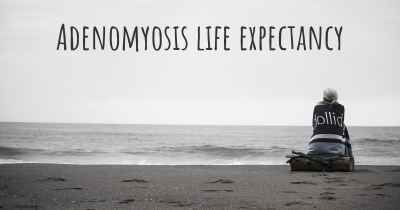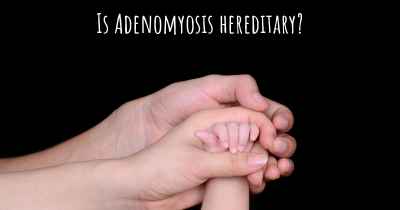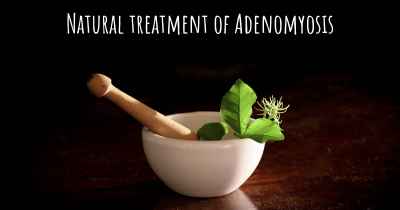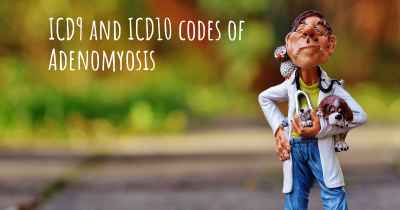Which advice would you give to someone who has just been diagnosed with Adenomyosis?
See some advice from people with experience in Adenomyosis to people who have just been diagnosed with Adenomyosis
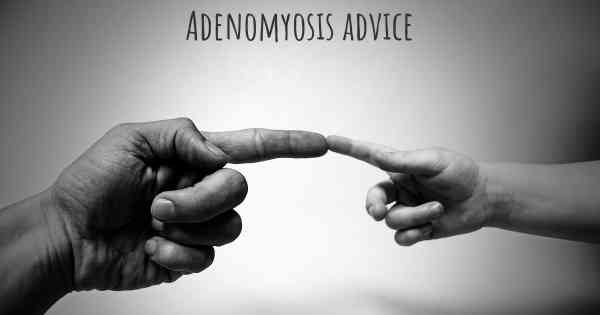
Advice for Someone Diagnosed with Adenomyosis
Receiving a diagnosis of adenomyosis can be overwhelming and raise many questions about your health and future. Adenomyosis is a condition where the tissue lining the uterus (endometrium) grows into the muscular wall of the uterus, causing pain, heavy bleeding, and other symptoms. While there is no cure for adenomyosis, there are several strategies and lifestyle changes that can help manage the symptoms and improve your quality of life. Here is some advice to consider:
1. Educate Yourself:
Take the time to learn about adenomyosis, its causes, symptoms, and available treatment options. Understanding the condition will empower you to make informed decisions about your health and treatment plan. Consult reliable sources such as medical websites, books, or reputable healthcare professionals.
2. Seek Professional Guidance:
Consult with a healthcare professional who specializes in gynecology or reproductive health. They can provide you with accurate information, answer your questions, and guide you through the available treatment options. A specialist will help tailor a treatment plan that suits your specific needs and preferences.
3. Discuss Treatment Options:
There is no one-size-fits-all approach to treating adenomyosis. Treatment options vary depending on the severity of symptoms, your age, desire for future pregnancies, and overall health. Discuss the available treatment options with your healthcare provider, which may include medication, hormonal therapies, pain management techniques, or, in severe cases, surgery. Together, you can decide on the best course of action.
4. Manage Pain and Discomfort:
Adenomyosis can cause significant pain and discomfort during menstruation and throughout the menstrual cycle. Explore different pain management techniques such as heat therapy, over-the-counter pain relievers, relaxation exercises, and gentle physical activity. Your healthcare provider may also prescribe specific medications to alleviate pain and reduce inflammation.
5. Consider Hormonal Therapies:
Hormonal therapies, such as birth control pills, hormonal intrauterine devices (IUDs), or GnRH agonists, can help manage adenomyosis symptoms by reducing menstrual bleeding and suppressing the growth of endometrial tissue. Discuss the potential benefits and risks of hormonal therapies with your healthcare provider to determine if they are suitable for you.
6. Explore Alternative Therapies:
Some individuals find relief from adenomyosis symptoms through alternative therapies such as acupuncture, herbal remedies, or dietary changes. While scientific evidence supporting these approaches may be limited, they may be worth exploring under the guidance of a qualified healthcare professional.
7. Prioritize Self-Care:
Living with adenomyosis can be physically and emotionally challenging. It is crucial to prioritize self-care and make lifestyle adjustments to support your well-being. Get enough rest, eat a balanced diet, engage in regular exercise, and manage stress through relaxation techniques or activities you enjoy. Surround yourself with a supportive network of friends, family, or support groups who can provide understanding and encouragement.
8. Communicate Openly:
Adenomyosis can impact various aspects of your life, including relationships, work, and daily activities. Communicate openly with your loved ones, employer, or colleagues about your condition and its potential impact. This will help them understand your needs and provide necessary support and accommodations when required.
9. Consider Second Opinions:
If you have concerns about your diagnosis or treatment plan, don't hesitate to seek a second opinion from another qualified healthcare professional. It is essential to feel confident and comfortable with your healthcare team and the decisions made regarding your health.
10. Stay Positive:
Living with adenomyosis can be challenging, but maintaining a positive mindset can make a significant difference in your overall well-being. Surround yourself with positivity, engage in activities that bring you joy, and focus on the aspects of life that you can control. Remember, you are not alone, and there are resources and support available to help you navigate this journey.
Posted Mar 20, 2017 by Kate 1000
Posted Sep 10, 2017 by Marissa 2010
